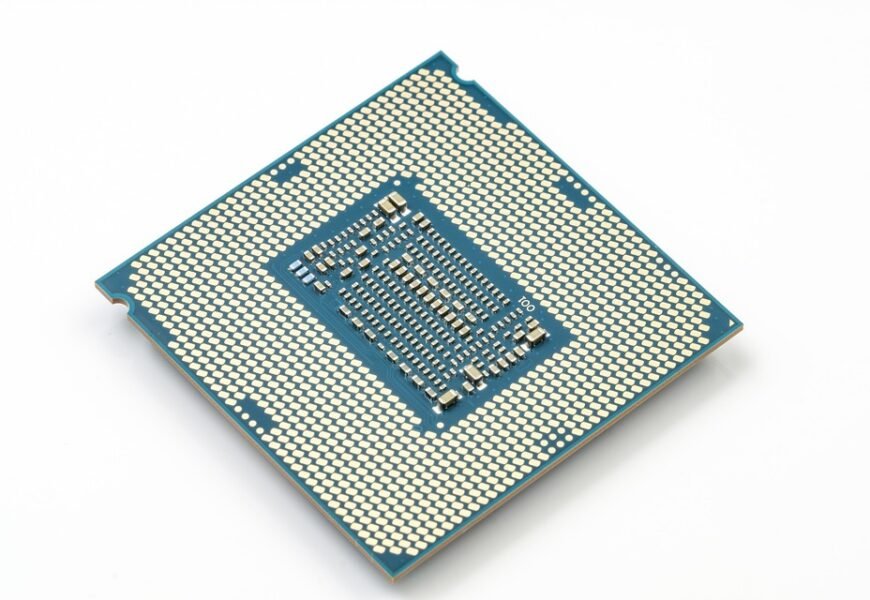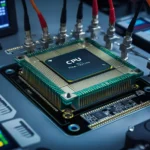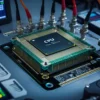In the realm of PC gaming, the power of your gaming rig often hinges on one critical component: the Central Processing Unit (CPU). The CPU is often referred to as the brain of the computer; it processes instructions, manages tasks, and determines the overall speed and efficiency of your machine. As the gaming industry continues to evolve, with increased demands for more complex graphics and immersive experiences, selecting the right CPU has never been more essential.
In this article, we will guide you through everything you need to consider when choosing the right CPU for your gaming rig, providing insights into industry trends, technical innovations, and a look towards the future of gaming CPUs.
Understanding CPU Fundamentals
Before diving into the intricacies of selecting a CPU, it’s important to understand the fundamental characteristics that define a processor’s performance. Here are a few key specifications:
1. Core Count
Modern CPUs come with multiple cores, with each core capable of executing its own thread. Traditional gaming often didn’t require more than four cores; however, recent advancements in game development have seen a shift toward highly multithreaded applications that can benefit from significantly higher core counts. Current high-end CPUs boast up to 16 cores or more, enabling better multitasking and improved performance in simultaneous operations.
2. Clock Speed
The clock speed—measured in gigahertz (GHz)—represents the number of cycles a CPU can perform in a second. Higher clock speeds can result in faster performance for tasks that require rapid processing, yet it is not the sole determiner of overall CPU performance. A CPU’s architecture and the number of cores also play crucial roles.
3. Thermal Design Power (TDP)
TDP denotes the maximum amount of heat a CPU can produce under load, which is critical for considering cooling solutions. CPUs with higher TDP generally require more robust cooling solutions, particularly in gaming scenarios where sustained performance is key.
4. Architecture and Process Node
The architecture of a CPU refers to its design and the manufacturing process used to create it. Innovations in semiconductor fabrication have led to smaller process nodes, facilitating greater transistor density, thermal efficiency, and overall performance. Currently, most leading CPUs are manufactured using a 7nm process or lower.
Choosing a CPU: Key Factors
1. Gaming vs. Multitasking Needs
The first consideration is understanding what you plan to do with your gaming rig. If you’re primarily gaming, many titles are optimized for high single-thread performance. Conversely, if you intend to stream while gaming, a multicore processor may be beneficial to handle both tasks seamlessly.
Industry Insight:
Recent benchmarks show that certain games still favor CPUs with higher clock speeds over those with more cores, although the gap is narrowing as more titles embrace multithreading.
2. Budget
The cost of CPUs can vary drastically. Entry-level processors can be found for around $100, while high-end options can exceed $800. It’s essential to balance performance with budgetary constraints, ensuring you allocate resources wisely amongst all your components.
Technical Innovation:
As of 2023, AMD and Intel have launched several mid-range CPUs that strike a good balance of price and performance, making them particularly attractive for budget gamers.
3. Compatibility
Before settling on a CPU, ensure that it’s compatible with your motherboard. Motherboards are designed with specific chipsets that support certain CPU families. Moreover, if you’re upgrading, double-check your existing hardware for compatibility.
4. Future-Proofing
The rapid pace of technological advancement means that gaming requirements continue to grow. Investing in a slightly more powerful CPU than you currently need can provide longevity, protecting your investment against obsolescence.
Future Outlook:
Trends indicate a push toward 8 to 12 cores as the standard for high-end gaming systems, as upcoming games and applications are developed to utilize more cores efficiently.
Current Market Leaders: AMD vs. Intel
The CPU market has largely been dominated by two players: AMD and Intel. Each has its own strengths and weaknesses.
AMD
AMD’s Ryzen series processors have gained strong traction among gamers and content creators alike due to their competitive pricing and high core counts. Recent releases like the Ryzen 5000 series have showcased impressive performance improvements thanks to the Zen 3 architecture, which optimizes single-threaded performance while also scaling well with increased parallel workloads.
Intel
Intel, meanwhile, has historically led the way in terms of single-thread performance. The latest Core series, particularly the 12th (Alder Lake) and 13th (Raptor Lake) generations, have been designed with a hybrid architecture that combines Performance cores and Efficient cores. This innovative design allows for flexibility in task allocation, improving performance for both gaming and productivity.
Technical Innovations on the Horizon
As the gaming world pushes the envelope, CPU manufacturers consistently innovate to meet the increasing demands. Here are some noteworthy trends:
1. 3D V-Cache Technology
AMD’s 3D V-Cache allows for greater cache density, enabling improved performance without significant increases in core count or power consumption. This innovative stacking technology increases performance in gaming scenarios, particularly in CPU-bound situations.
2. AI-Enhanced Performance
Both AMD and Intel are integrating AI capabilities into their processors to optimize performance automatically based on workloads. This could result in CPUs dynamically adjusting their capabilities in real time.
3. Integration of Graphics Processing Units (GPUs)
With the rise of integrated circuits that include both CPU and GPU functionalities, such as AMD’s Ryzen APUs and Intel’s Iris Xe graphics, low-end gaming solutions become more viable. These advancements make it easier for gamers on a budget to experience satisfactory gaming performance without the need for a dedicated GPU.
Conclusion
When building a gaming rig, choosing the right CPU is pivotal. It requires an understanding of your gaming habits, budget, and the trajectory of technological advancements. As the industry continues to shift towards multicore and hybrid architectures, aligning your choice of CPU with market trends will ensure not only a seamless gaming experience today but also prepare you for the coming demands of future titles.
In 2023, both AMD and Intel offer impressive options catering to various budgets and performance needs. By navigating through the core specifications, compatibility, and upcoming innovations, you can make an informed decision that will enhance your gaming experience for years to come.
Ultimately, investing in a quality CPU isn’t merely about achieving the best frame rates—it’s about crafting an experience that allows you to immerse yourself in the worlds of your favorite games, collaborating with the vast ecosystems of technology that are continuously evolving. So, as you prepare to build or upgrade your gaming rig, take the time to choose wisely; the right CPU can truly redefine your gaming adventure.


















